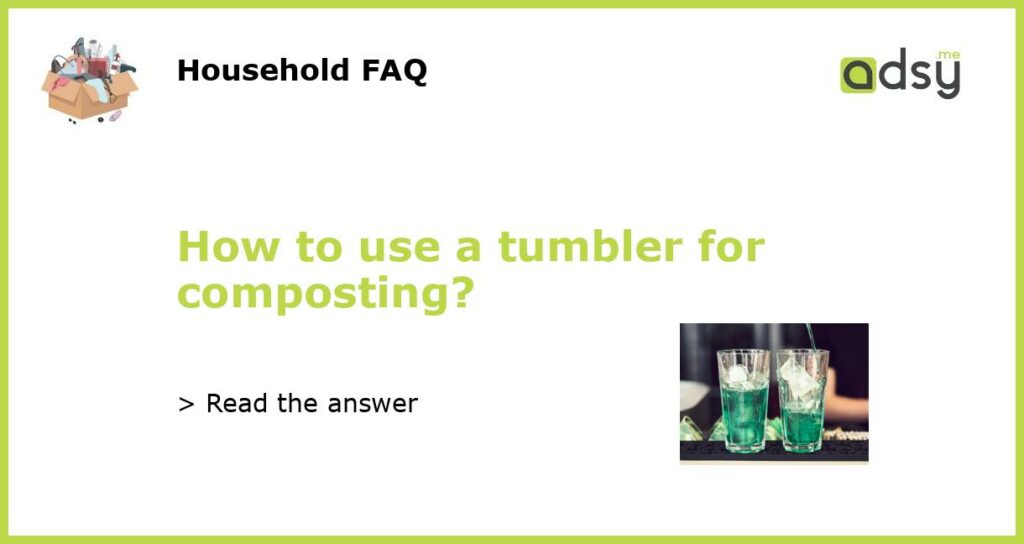What is composting?
Composting is the process of decomposing organic materials, such as kitchen scraps and yard waste, into nutrient-rich soil for gardening. It is a sustainable practice that helps reduce waste and improve soil health.
Why use a tumbler for composting?
A tumbler is a specialized composting bin that has a rotating mechanism. It offers several advantages over traditional composting methods:
- Efficiency: The rotating action of a tumbler helps speed up the decomposition process, producing compost faster than traditional methods.
- Convenience: Tumblers are designed to be easily turned, making it more convenient to mix and aerate the compost pile.
- Pest control: Tumblers are usually elevated and have secure lids, reducing the risk of pests and animals getting into the compost pile.
- Odor control: By containing the composting process in a closed system, tumblers help control odors better than open compost piles.
- Neat and tidy: Tumblers keep the compost contained, preventing it from spilling or spreading around the garden.
How to use a tumbler for composting
Using a tumbler for composting is a straightforward process. Follow these steps to get started:
Step 1: Choose a suitable location
Select a flat, well-drained area in your garden or backyard to place the tumbler. Make sure it is easily accessible for adding materials and turning the tumbler.
Step 2: Add compostable materials
Start by adding a mixture of green and brown materials to the tumbler. Green materials include kitchen scraps, coffee grounds, and fresh yard waste, while brown materials include dry leaves, straw, and shredded newspaper. Aim for a ratio of roughly 3 parts brown to 1 part green.
Step 3: Moisture management
Moisture is essential for the composting process. Ensure that the materials are moist but not soggy. If the compost appears dry, sprinkle some water to moisten it. If it is too wet, add more brown materials to absorb the excess moisture.
Step 4: Turning the tumbler
Rotate the tumbler regularly to mix and aerate the compost. Turning the tumbler every few days will help accelerate the decomposition process and produce compost more quickly.
Step 5: Monitor and adjust
Keep an eye on the composting process and monitor the temperature, moisture levels, and odor. The ideal temperature range for quick composting is between 120°F and 160°F (49°C and 71°C). If the compost smells unpleasant or becomes slimy, it may be too wet or lacking enough airflow. Adjust the moisture and aeration accordingly.
Step 6: Harvest the compost
Once the compost is dark, crumbly, and has a pleasant earthy smell, it is ready to be harvested. Transfer the finished compost to a separate container or directly to your garden beds to enrich the soil.
Using a tumbler for composting is a convenient and efficient way to turn kitchen scraps and yard waste into nutrient-rich soil amendment. By following these simple steps, you can effectively compost and create a sustainable source of organic matter for your garden.






